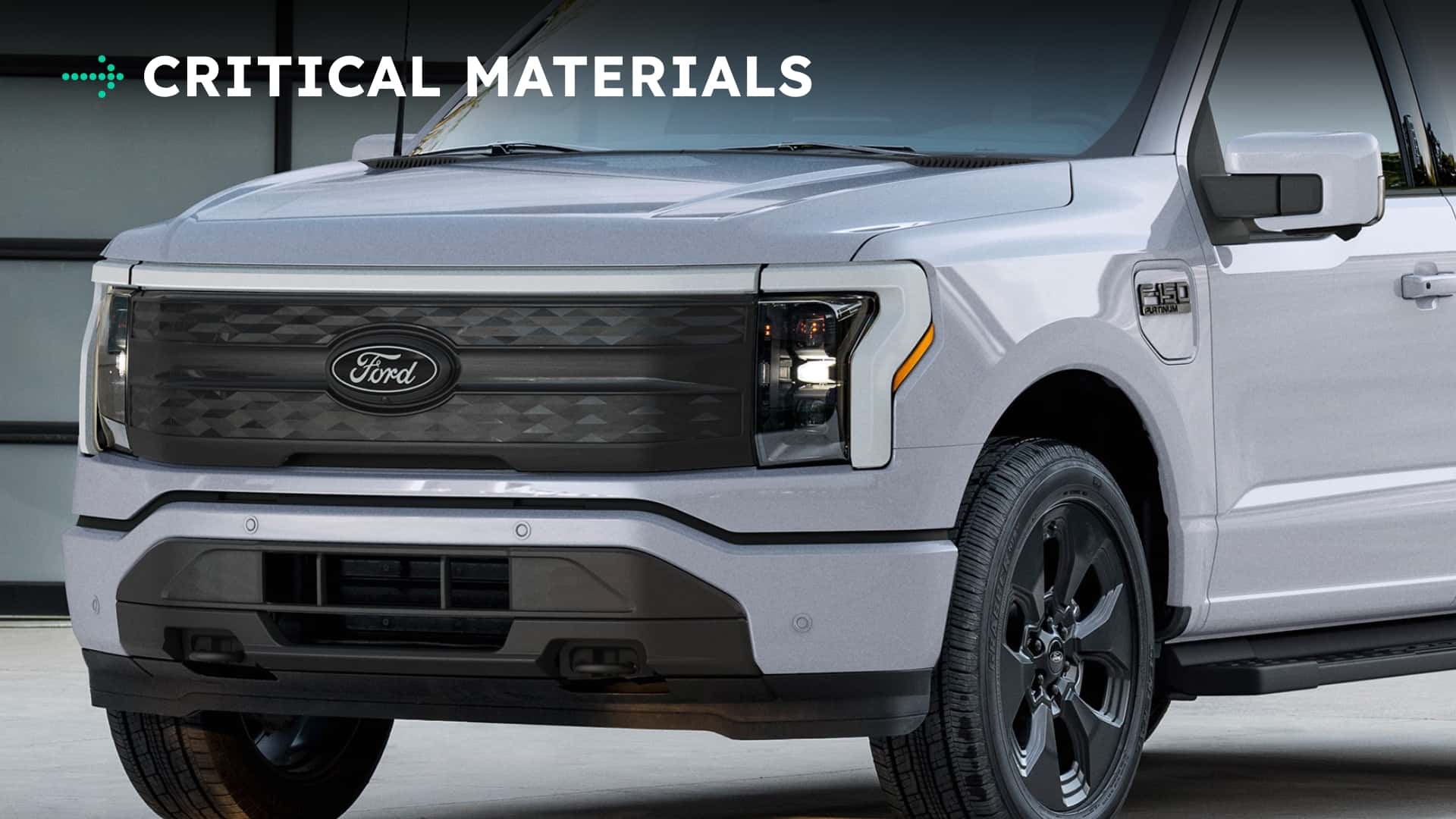
About a decade ago, the American auto industry's trajectory became clear: go big, or go bust.
Gas was cheap, electric vehicles were something you half-assedly cranked out to comply with emissions rules in California, and economically empowered post-Great Recession car buyers were flocking to trucks and SUVs in force. They had been trending in that direction for some time, but by the late 2010s we began to see this reflected in product decisions. Or rather, the products that General Motors, Ford and then-Fiat Chrysler chose not to make. The future was all about big SUVs and, more specifically, big pickup trucks with big price tags.
But America's in a different place today, both economically and technologically. And what was once the key driver of profits now feels like a huge liability.
That kicks off this Monday edition of Critical Materials, our morning roundup of auto industry and technology news. Also on tap today: Hyundai and Kia don't seem to be slowing down on EVs, and China's Geely Group is going international amid a profit drop.
30%: American Buyers No Longer Scream 'Truck Yeah' As Prices Skyrocket

On Friday, Critical Materials focused on the current shortcomings of electric trucks that we all know about: meeting buyers' demands for towing, hauling and off-roading without needing massive, environmentally unfriendly batteries that probably come with staggering price tags. The American auto industry, in particular, built its future around big trucks—and those don't translate well to the EV world. (For the record, I think they will in time as battery and motor technology advances, but perhaps not one-to-one with big trucks as we understand them right now.)
But as Bloomberg's always-a-must-read Liam Denning writes, there's kind of a bigger problem here: the trucks themselves. The average vehicle in America is now $12,000 (!!!) more expensive than it was just six years ago, according to Cox Automotive. And with Americans getting squeezed out in every direction, the $70,000 pickup truck financed over 84 months is looking a lot less palatable than it once did.
Now, add in higher interest rates and potential price hikes from tariffs, and you have a real recipe for disaster:
The latest inflation figures added more evidence of Americans struggling to buy new cars and trucks. While new-vehicle inflation in July was low, used-vehicle prices accelerated. Parts inflation is also picking up, and this was the first month in more than three years when used-vehicle and parts prices increased faster than headline inflation.
This cuts against the direction taken by Ford and General Motors Co. over the past decade or so: Selling higher-priced, higher-margin trucks and SUVs and mostly leaving the rest of the market to others. Detroit’s average vehicle now sells for around $55,000, roughly $10,000 to $20,000 more than the average for Japanese competitors.
This approach has worked well. In 2018, Ford and GM reported combined worldwide sales of 14.4 million vehicles and net income of $14.1 billion. Last year, they sold 10.5 million vehicles, and profit topped $20 billion.
The cost is growth. Sub-$30,000 vehicles have all but disappeared from U.S. dealerships, and annual sales remain subdued at around 16 million compared with the 17 million to 18 million that prevailed before the pandemic. Slowing adult population growth and a rising proportion of retirees, who drive far less on average, present a growing headwind.
Denning notes, correctly, that President Donald Trump's trade deals may theoretically open the door for more American car sales in markets like Europe, South Korea and Japan—provided American automakers build cars that those people actually want to buy. And right now, they do not. (Call me when GMC gets into the kei truck game.)
All of this is worth discussing against the backdrop of Ford's $30,000 EV truck project: a new platform for affordable EVs, built in a novel way to compete with China's best. That's a "broader shift," Denning writes, and a real reversal from the focus Detroit's had on big pickup prices and big profit margins.
After all, where else can these companies go? If the market is saturated with slow-selling, higher-priced models, and you're staring down the inevitable day BYD makes an entry into the U.S., you have to aim high. Or in this case, aim low.
I'd add that this "the trucks are too damn expensive" problem is also tied to the EV transition: At least some of these companies realize the future is electric, and for a long time, the plan was to finance that transition with gas truck sales.
That plan was predicated on a very different economic environment. Now, all bets are off.
60%: Hyundai, Kia Don't Seem To Slow Down On EVs

Nobody I talk to at Hyundai and Kia seem thrilled about America's new 15% tariff on most imports from South Korea. It's better than the threatened 25%, sure, but it's still a blow to an export-reliant country that's theoretically one of our most important geopolitical allies. But hey, nobody asks me about these things.
In the meantime, Automotive News' future product pipeline feature indicates the Hyundai Motor Group will continue on with its mix of gas cars, hybrids and EVs, which seems to be working well overall. This is to say: There's no reason to believe any EVs will be canceled amid the end to EV tax credits and the changing tariff situation.
Here's a blurb on one I'm especially excited about, the Kia EV3:
Kia’s EV3 subcompact crossover is expected to go on sale in late 2026. The EV3 is 14 inches shorter than the EV6 and will be one of two entry points into Kia’s EV lineup, along with the EV4 compact sedan. The EV3 is already available in South Korea, the U.K. and parts of Europe. The European version offers a long-range model that uses an 81.4-kilowatt-hour battery and a standard-range model with a 58.3-kWh battery. Under the global WLTP standard, long-range EV3s will be able travel about 370 miles on a single charge. Standard-range EV3s will deliver about 260 miles. Both will be able to recoup 80 percent of their battery power in 30 minutes. Front-wheel drive is standard, but an all-wheel-drive setup could become available after the initial launch date. Pricing is expected to start around $35,000 and top out at $50,000. U.S.-bound EV3s could come from Kia’s factory in Mexico. A freshen is expected in 2028.
We've heard that the EV3 could be made in Mexico before as well, although the company won't say officially yet where it's going to be built (and yes, I keep pestering them about this.) Of course, Mexican production brings tariff headaches of its own now, so we'll see.
90%: Geely's Profits Decline, But An Export Focus Is Coming

People ask when Chinese cars might arrive in America; technically, they're kind of already here, when you remember that Volvo and Polestar's parent company is the Chinese conglomerate Geely Group. The Wall Street Journal reports its profits were down in the second quarter, but its international expansion is going well:
The Hangzhou-based carmaker said Thursday that its net profit dropped 14% from a year earlier to 9.29 billion yuan, equivalent to $1.29 billion, in the first six months of 2025. An increase in tax expense, driven by higher profit before tax, weighed on the bottom line, China’s second-largest electric-vehicle maker said.
Geely, which has been expanding its market share both domestically and abroad, said it stepped up exports of its mainstream electric cars and plug-in hybrids to more international markets in the second half of the year. The automaker is also committed to building a stronger global supply chain and accelerating localized production capacity in partnership with others, it said.
The mixed results come as China’s auto industry is grappling with policy changes that began with restrictions on the promotion of autonomous-driving technology early this year. Chinese authorities have also warned against excessive competition in the sector, and industry associations have called for steep price cuts to be halted.
Meanwhile, Zeekr is a Geely Group brand we watch closely. In Q2 of 2024, it lost 2.88 billion yuan (about $400 million). In Q2 of this year, it still lost money, but closed the gap to 394 million yuan (about $55 million). Profitability for that division feels like it's on the horizon.
100%: What's An American Automaker To Do If The Big Trucks Aren't Selling?

In the car business, you either win on profit margins—making expensive vehicles you can charge more for—or you win on volume. I think there actually is room for automakers to see success with less expensive vehicles; look at the wins we've seen from both the Chevy Equinox EV and the gas-powered Chevy Trax. Or even the Ford Maverick, which is hard to beat, agnostic of what powers it.
What do you want to see from the Big Three in particular? Sound off in the comments.
Contact the author: patrick.george@insideevs.com








